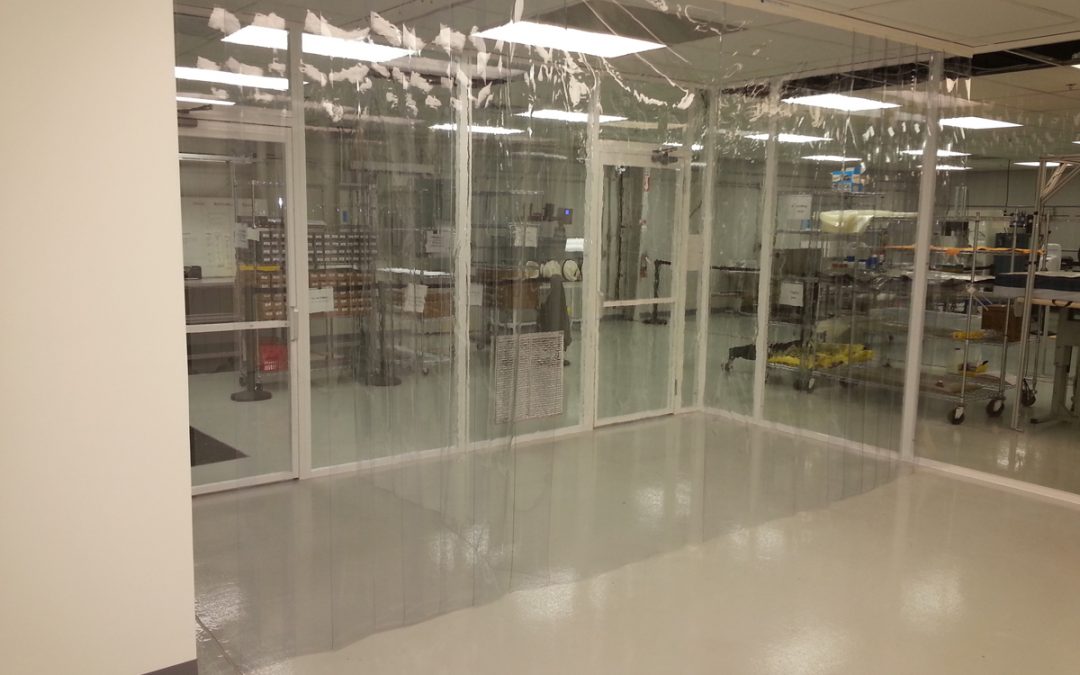If you have a cleanroom, you probably already know that humans are the biggest source of cleanroom contamination. The fact is that you do need people in the cleanroom to be able to manufacture your product. This means that your employees have to be gowned properly in order to reduce the amount of particles that are released into the air inside your cleanroom. The difficult part is deciding how they should gown, and ensuring that all employees are properly gowned, at all times.
Depending on what type of cleanroom you have, your employee requirements for gowning will be different. In some cases, they may just have to put on a lab coat and goggles, where in others they’ll need a full bunny suit. Generally, these requirement correspond with the level of cleanliness your cleanroom has to meet. The higher the standards, the more gear your employees will have to wear.
Once you know what your employees are required to wear, you can easily design a protocol for them to follow. It’s a good idea to keep a mirror in the gowning station, so employees can make sure garments are properly tucked in. You may also post a picture of someone properly gowned, as a “how to” reference for employees.
Here is a general list of things to consider when teaching employees proper gowning technique, to help you establish a simple, step by step process that your employees can follow every time they enter the cleanroom:
Remember that proper cleanroom attire starts outside the gowning room: Employees should be discouraged from wearing makeup, jewelry, hairsprays or perfumes, as these can all give off unnecessary particles and fumes, endangering the balanced state of your cleanroom.
Consider footwear: It may be a good idea for employees to have shoes dedicated only to the cleanroom, in the interest of minimizing contamination. If employees change shoes before even entering the gowning room, you’re minimizing the amount of dirt and dust particles tracked into the cleanroom.
No food: While this may seem like a no-brainer, make sure you’re reminding employees never to eat in the cleanroom. It may seem like a hassle for them to leave for lunch, and then redo the entire gowning process, but it’s a greater concern to have any kind of food or gum in the cleanroom. It’s a good idea to put up a sign outside the door to remind anyone entering the cleanroom of this rule.
Top to bottom gowning: When you’re developing your gowning protocol, it’s important to know that gowning should be done from top to bottom. That means that employees should start with hoods, then move to tops, then pants, then shoe covers. This method of dressing prevents any particles from falling down to already-gowned pants or booties.
Don’t touch: Employees should be aware that most cleanliness violations happen as a result of a garment being touched by dirty hands, or the floor. You should stress the importance of regularly washing and drying hands and gloves, as well as ensuring that garments do not touch the floor. A good way to minimize these issues is to make sure that surfaces are ultra-clean, and that no-touch washers and dryers are readily available.
Minimize motion: Believe it or not, people emit thousands of particles a minute even when they’re dressed in cleanroom gowning gear, and sitting still. As soon as people begin to move, that number of particles increases exponentially. This is why both your gowning room and your cleanroom itself, should be set up to minimize movement as much as possible.
With these considerations in mind, it shouldn’t be too difficult to come up with a thorough, step-by-step gowning procedure for your employees. Once you design the protocol, it’s important to make sure you train, and retrain it. Your personnel should attend a formal training program, but don’t stop there. Post reminder posters outside the gowning room, and make sure that your employees understand how important the gowning process is to maintaining the standards of your cleanroom. The best way to keep your cleanroom clean is to have a unified program for gowning procedure that everyone follows.
If you’re in need of gowning supplies, or if you’re looking for more information on cleanrooms, give the experts at Angstrom a call! We’ve been in the business for more than 20 years, and design, repair, and supply every kind of cleanroom. At 888-768-6900 we’re here to help answer any cleanroom question.


